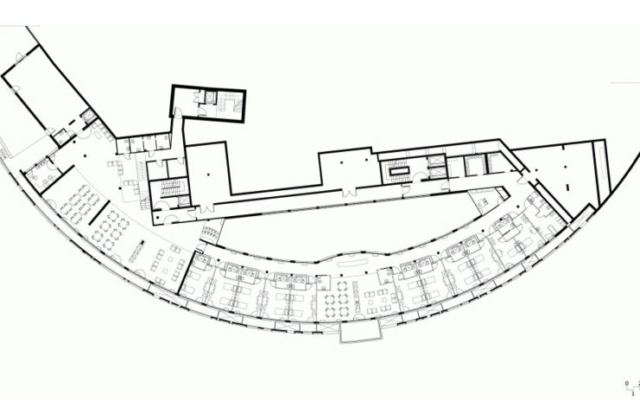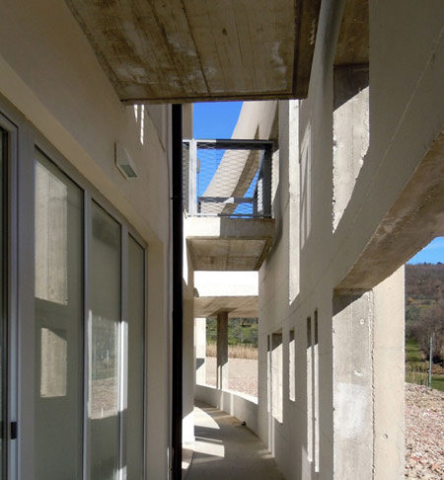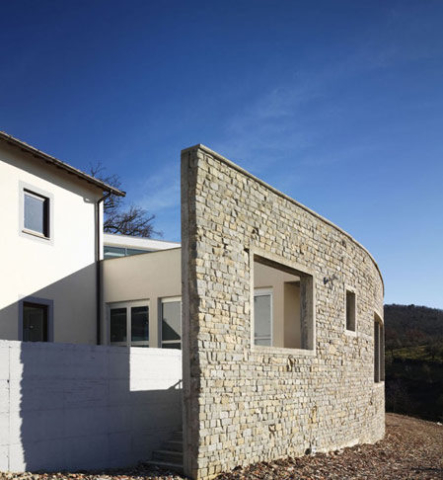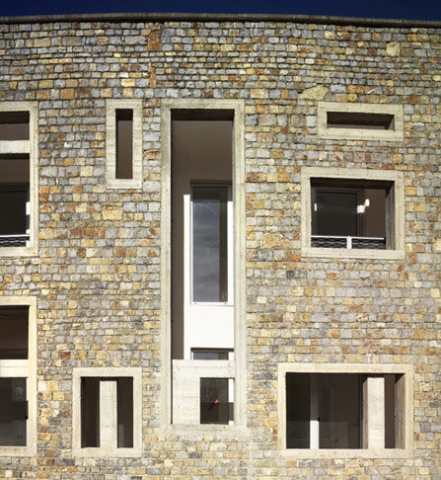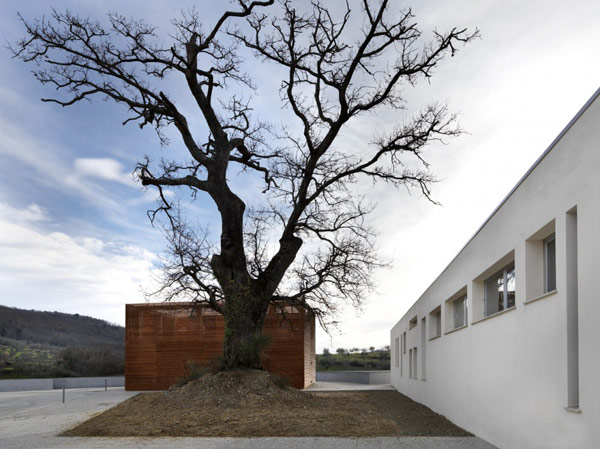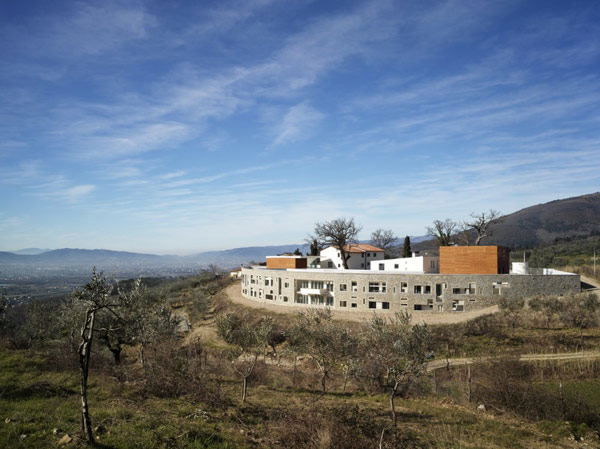Arhitekte: IPOSTUDIO Architects
Lokacija: Montemurlo – provincija Prato, Italija
Klijent: Azienda Sanitaria Locale 4, Prato
Godina projekta: 2010.
Površina: 3.660 m2
Fotografije: Pietro Savorelli, IPOSTUDIO Architects
Projekat je lociran u pejzažnom predelu, koji ima veliki značaj zbog poljoprivredne tradicije ovog mesta, i koga oslikava prisustvo terasastih formi od kamenih zidova znatnih dimenzija građenih na suvo. Važno je bilo postići kompromis između filozofije dizajna i morfološke kompleksnosti terena, naročito zbog specifičnosti tipa naselja. Na osnovu toga rodila se ideja o jednoj fasadi koja je orjentisana ka dolini i zakrivljenosti fasadnog profila koja simulira konturne linije terena.
Cilj je dakle bio sjediniti novo prisustvo sa postojećim putem funkcionalne reupotrebe i integracije postojećih ruralnih objekata u nove strukture. Spojni element proizilazi iz koncepta farme, tipičnog aspekta farmi na toskanskim brdima. U slučajevima velike strmine prostor farme karakteriše podrum velikih dimenzija koji formira krovnu baštu. Ovde nivo dvorišta određuje nivo prethodno postojećih struktura i onaj na ulazu u kompleks.
Kao posledica toga stambene jedinice su locirane u volumenu koji je formiran između graničnog zida i padine. Organizacija kompleksa podrazumeva radijalno raspoređene jedinice koje gledaju ka dolini i koje se nalaze u istom rasporedu na dva nivoa. Podrum omogućava pogled ka dolini kroz „zid“ visine dva sprata na kome je prisutna igra punih i praznih polja. Ovaj zid funkcioniše kao dupli omotač: stakleni zid koji omogućava direktan kontakt sa sobama gostiju i drugi lejer koji je udaljen 1,8m od prvog.
To je perforiran kameni zid sa slobodno raspoređenim otvorima koji svaku sobu čine različitom uprkos konfiguraciji osnove. Spoljašnja fasada zida obložena je lokalnim kamenom, koji je nabavljen direktno sa mesta iskopavanja i koji evocira na kamene zidove građene na suvo, tipične za toskanska sela.
archdaily.com
Architects: IPOSTUDIO Architects
http://www.ipostudio.it/
Location: Montemurlo Province of Prato, Italy
Client: Azienda Sanitaria Locale 4, Prato
Project Year: 2010
Project Area: 3,660 sqm
Photographs: Pietro Savorelli, IPOSTUDIO Architects
The project is located on an area with a landscape of great importance for its intrinsic agricultural tradition, characterized by the presence of terraces built with dry stone walls of considerable size. A compromise between the design philosophy and the morphologic complexity of the soil had to be reached due to the peculiarity of the settlement type. On that account, emerges the idea of a single façade towards the valley and its bending profile which simulates the soil contour lines.
The purpose has therefore been this one of merging the new presence with the existent through the functional reuse and integration of the existing rural buildings to the new structures. The union element derives from the concept of the farmyard, a typical aspect of the farmhouses of Tuscan hills. In cases of high incline, the farmyard is characterised by an excessive size basement such as to compose a roof garden. Here the farmyard level determines the level of the pre-existing structures and this one of the access to the complex.
Consequently the residential units are located in the volume which is formed between the boundary wall and the hill slope. The organization of the complex includes the units arranged in a radial grid overlooking the valley according to a repetitive system in two levels. The basement offers a free gaze towards the valley through a play of solids and voids which was achieved by a two-level “wall”. The presence of this wall functions as a double-skin diaphragm: a glass-wall skin which permits a direct contact with the guest rooms and a second one located at a distance of 1.80m from the first.
It is a perforated stonewall with random openings which makes every single room identifiable despite the plan configuration. The external façade of the wall has a local stone cladding, taken from the excavation site, as an evocation of the dry stone walls, typical of the Tuscan countryside.
archdaily.com




